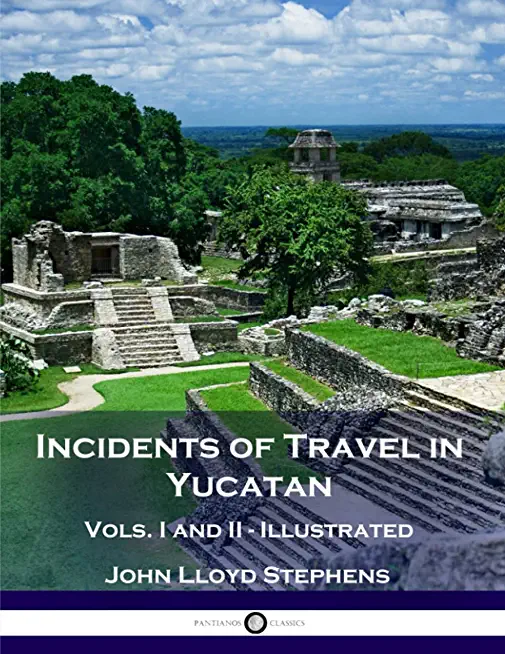
Catherwood, Frederick
product information
description
7Both volumes of John Lloyd Stephens epic accounts of the Yucatan are united in this single volume, complete with over 100 illustrations of encounters on his journeys in Central America.
Prior to the 1840s, when J. L. Stephens published this superb account of his explorations, the Yucatan was only crudely charted by Western explorers. Yet their descriptions of the odd ruins and beautiful landscape intrigued the young John Lloyd Stephens, who spent years yearning to explore and better chart the faraway lands. After a number of years spent traversing Europe and Egypt, Stephens was in 1839 commissioned as a Special Ambassador to the Central Americas.
Accompanied by his friend, the architect and draughtsman Frederick Catherwood, Stephens set off for the wilderness of the Yucatan, landing in what is today Belize. It wasn't long before the pair encountered the first Mayan ruins: the city of Copan. Captivated by the unique architecture and distinctive cultural remnants, the two pressed further inland.
Accounts of the cities of Palenque, Quiriguá and Uxmal are included in this edition, which reprints the many illustrations Frederick Catherwood made of the buildings, items and landscapes encountered. The great temples of the Mayan cities, the detailing of Mayan seals and monuments, as well as the stone houses of those in the upper strata of society, were drawn with an intricate and accurate detail.
Prior to Stephens publishing the accounts of his travels, it was assumed the structures found in Central America had simply been assembled by either Europeans or Asian visitors. It was not until Stephens' immense detailing of the artistic and architectural accomplishments that the Mayans were confirmed as a civilization of great sophistication. The two also noticed the calendar and numerical system the Mayans developed, but it was not until much later that this knowledge was fully deciphered.
Following Stephens' explorations, the Mesoamericas became a place of great interest to North American and European intellectuals. Numerous expeditions and archaeological treks were encouraged by his findings, and today many of the sites visited by Stephens are popular tourist destinations.
Prior to the 1840s, when J. L. Stephens published this superb account of his explorations, the Yucatan was only crudely charted by Western explorers. Yet their descriptions of the odd ruins and beautiful landscape intrigued the young John Lloyd Stephens, who spent years yearning to explore and better chart the faraway lands. After a number of years spent traversing Europe and Egypt, Stephens was in 1839 commissioned as a Special Ambassador to the Central Americas.
Accompanied by his friend, the architect and draughtsman Frederick Catherwood, Stephens set off for the wilderness of the Yucatan, landing in what is today Belize. It wasn't long before the pair encountered the first Mayan ruins: the city of Copan. Captivated by the unique architecture and distinctive cultural remnants, the two pressed further inland.
Accounts of the cities of Palenque, Quiriguá and Uxmal are included in this edition, which reprints the many illustrations Frederick Catherwood made of the buildings, items and landscapes encountered. The great temples of the Mayan cities, the detailing of Mayan seals and monuments, as well as the stone houses of those in the upper strata of society, were drawn with an intricate and accurate detail.
Prior to Stephens publishing the accounts of his travels, it was assumed the structures found in Central America had simply been assembled by either Europeans or Asian visitors. It was not until Stephens' immense detailing of the artistic and architectural accomplishments that the Mayans were confirmed as a civilization of great sophistication. The two also noticed the calendar and numerical system the Mayans developed, but it was not until much later that this knowledge was fully deciphered.
Following Stephens' explorations, the Mesoamericas became a place of great interest to North American and European intellectuals. Numerous expeditions and archaeological treks were encouraged by his findings, and today many of the sites visited by Stephens are popular tourist destinations.
member goods
No member items were found under this heading.
Return Policy
All sales are final
Shipping
No special shipping considerations available.
Shipping fees determined at checkout.







